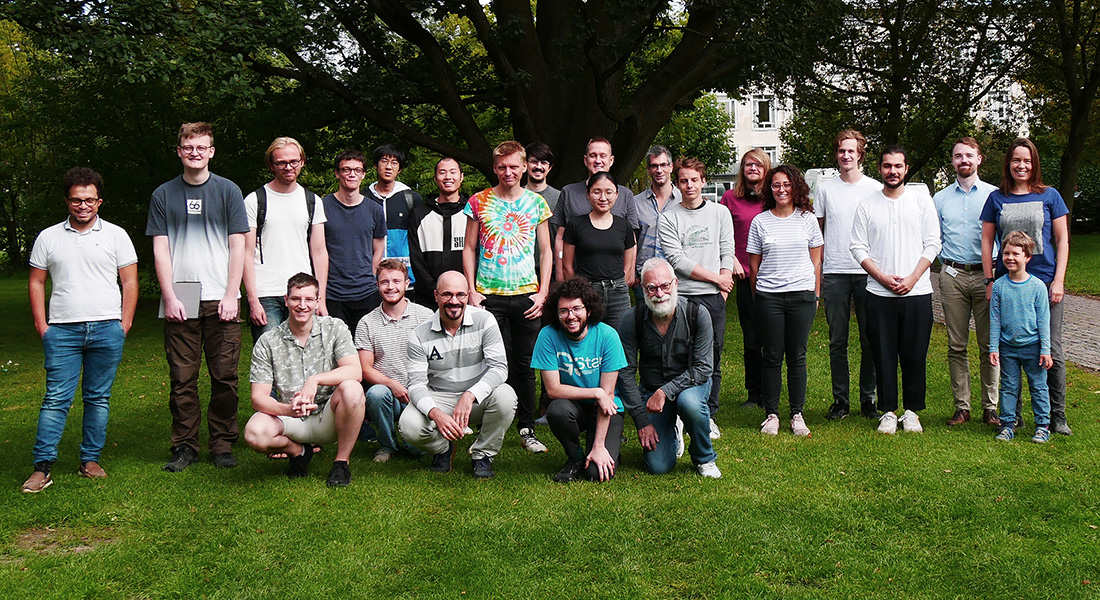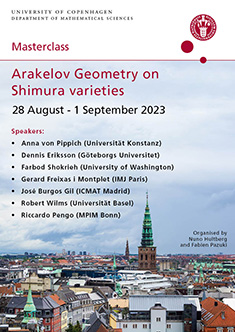Masterclass: Arakelov geometry on Shimura varieties

The set of rational solutions to the Weierstrass equation defining an elliptic curve over the rationals is an abelian group. By the Mordell-Weil theorem, this group is finitely generated and the number of independent basis points of infinite order is called the rank of the elliptic curve. The rank is an important invariant of the elliptic curve: if the rank equals zero, then the elliptic curve has only a finite number of rational points; if the rank is greater than zero, then the elliptic curve has an infinite number of rational points. However, the rank is still very mysterious. In some cases the rank can be computed numerically, but so far there is no effective method for computing the rank of elliptic curves.
The Birch and Swinnerton-Dyer (BSD) conjecture predicts that the rank can be computed by means of the Hasse-Weil L-function of the elliptic curve. In view of the celebrated modularity theorem of Wiles et al., this L-function has a holomorphic continuation to the whole complex s-plane and satisfies a functional equation relating the value at $s$ to the value at $2-s$. The Birch and Swinnerton-Dyer conjecture then states that the rank of the elliptic curve equals the analytic rank of the curve, that is, the order of its L-function at $s=1$.
Not much is known in general regarding the BSD conjecture. But it can be seen as the beginning of a long history of conjectures relating L-values to height-type invariants of cycles, which pertain to the realm of Arakelov geometry.
By the work of Gross-Zagier and Kolyvagin we know that the BSD conjecture is true when the analytic rank of the elliptic curve equals 0 or 1. In this case the contribution of Gross and Zagier is an explicit construction of a point of infinite order on elliptic curves with analytic rank 1. This result can be deduced from the groundbreaking Gross-Zagier formula, which describes the height of Heegner points in terms of a derivative of the L-function of the elliptic curve at the point $s=1$. More generally, Gross-Kohnen-Zagier computed the heights of Heegner points in terms of Fourier coefficients of a modular forms. This is a famous example for the fact that modular forms are omnipresent in mathematics and often encode arithmetically interesting information via its Fourier coefficients.
The Gross-Zagier formula can be seen as a cornerstone in the direction of BSD conjecture. But it is also a guide and motivation for recent developments in Arakelov geometry and Shimura varieties (in particular concerning future research on height pairings of algebraic cycles in Shimura varieties).
The aim of the lectures is to provide the main tools for understanding the Gross-Zagier theorem and hence give an introduction to the aforementioned field of research. Thereby we will give a gentle introduction to the theory of heights, Riemann surfaces, modular forms and L-functions. Finally, we will state the Gross-Zagier theorem and discuss its applications as well as related topics for actual research in Arakelov geometry.
Target group
The target audience is PhD students in arithmetic geometry in the broadest sense. While no knowledge of Arakelov geometry is presupposed, participants should ideally have a solid background in algebraic geometry, algebraic number theory, and modular curves.
Lecturers
- Jose Burgos Gil (ICMAT - Madrid)
- Gerard Freixas i Montplet (Institut de Mathématiques de Jussieu - Paris)
- Anna von Pippich (Universität Konstanz)
Research Talks
In addition to the main lecture series, there will be some research talks to provide more context and further applications.
List of Speakers
- Robert Wilms (Universität Basel)
- Riccardo Pengo (Max Planck Institute for Mathematics, Bonn)
- Dennis Eriksson (Göteborgs Universitet)
- Farbod Shokrieh (University of Washington, Seattle)
Schedule and abstracts
Registration
The registration is now closed. Please, contact the organizers.

